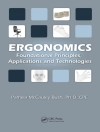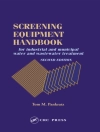- Provides a comprehensive overview of the latest research in grassland science and management
- Includes a selection of case studies which highlight current challenges facing grasslands in Europe, South America and New Zealand
- Discusses recent developments in botanical composition of grasslands, including the design of multi-species swards and herbal leys
Tabela de Conteúdo
Part 1 The role of grasslands in agricultural systems
- 1.The societal role of grasslands in agriculture: Nick van Eekeren, Louis Bolk Institute, The Netherlands;
- 2.Assessing the impact of climate change on grasslands: Martin Lukac, University of Reading, UK;
- 3.The role of grasslands in mixed farming/crop-livestock systems: Friedhelm Taube, Christian Albrechts University Of Kiel, Germany;
Part 2 Grassland dynamics
- 4.Advances in understanding traits/genetics of grassland species: Odd Arne Rognli, Norwegian Unviersity of Life Sciences, Norway;
- 5.Advances in understanding plant-soil-animal interactions in grasslands: Lynn Sollenberger, University of Florida, USA;
Part 3 Grassland management
- 6.Advances in grazing management: Michael O’Donovan, Teagasc, Ireland;
- 7.The use of precision technologies in grassland management: Laurence Shalloo, Teagasc, Ireland;
- 8.From data collection to decision support for sustainable pasture management: Magali Jouven, L’Institute Agro Montpellier, France;
- 9.Advances in managing grassland weeds: Maria-Teresa Sebastia, CTFC/University of Lleida, Spain;
Part 4 Grasslands, grazing and animal nutrition: Effects on health and product quality
- 10.Contribution of forages for high nutrient use efficiency in ruminant feeding: Martin Gierus, University of Natural Resources and Life Sciences, Austria;
- 11.The effects of pasture grazing on milk quality: Anjo Elgersma, Ghent University, Belgium;
- 12.Grasslands and One Health: Frédéric Leroy, Vrije Universiteit Brussel, Belgium;
Part 5 Development in botanical composition of grasslands
- 13.Improving biodiversity in grassland systems: Irina Herzon, University of Helsinki, Finland; James M. Bullock, UK Centre for Ecology and Hydrology, The UK; Jean-Yves Humbert and Raphaël Arlettaz, University of Bern, Switzerland; Péter Török, University of Debrecen, Hungary; and Karin Stein-Bachinger, Leibniz Centre for Agricultural Landscape Research, Germany;
- 14.Designing and developing multi-species swards/herbal leys: Thomas Moloney, DLF, Ireland;
- 15.The role of plantain (Plantago lanceolata) in reducing nitrogen loss from grazed mixed-species pastures: Ina Pinxterhuis, Dairy NZ, New Zealand;
- 16.Advances in plant secondary metabolites and endophytes in grasslands: David E. Hume, Ag Research – Grasslands Research Centre, New Zealand;
Part 6 Case studies
- 17.Grasslands in Europe: challenges and solutions: Agnes van den Pol-van Dasselaar;
- 18.Challenges facing alpine/mountain grasslands: Giovanni Peratoner, Laimburg Institute, Italy;
- 19.Grasslands in South America: challenges and solutions: Paulo César de Faccio Carvalho, Universidade Federal do Rio Grande do Sul, Brazil;
- 20.Grasslands in New Zealand: challenges and solutions: David Stevens, Ag Research, New Zealand;
- 21.Conclusion: Agnes van den Pol-van Dasselaar;
Sobre o autor
Dr Lynn Sollenberger is Distinguished Professor of Agronomy and a University of Florida Distinguished Teaching Scholar. The goal of Dr Sollenberger’s research program is to acquire new knowledge of plant-animal-environment interactions focusing on the ecosystem services of grasslands.
Compre este e-book e ganhe mais 1 GRÁTIS!
Língua Inglês ● Formato EPUB ● Páginas 600 ● ISBN 9781801469036 ● Editor Agnes van den Pol-van Dasselaar ● Editora Burleigh Dodds Science Publishing ● Cidade Cambridge ● País GB ● Publicado 2025 ● Carregável 24 meses ● Moeda EUR ● ID 10007311 ● Proteção contra cópia Adobe DRM
Requer um leitor de ebook capaz de DRM












